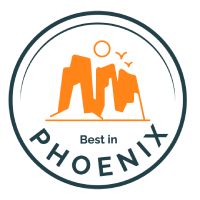LASIK Surgery in Scottsdale, AZ
Do you want to see life through new eyes? Consider booking LASIK surgery with Dr. Arora. This laser-assisted vision correction procedure helps patients with astigmatism, hyperopia, and myopia achieve better vision without the use of corrective lenses. Schedule a consultation to get started today.
LASIK Recovery
Most LASIK patients achieve near or total 20/20 vision within 24 hours of the procedure. You will experience blurry vision and mild discomfort for four to six hours after surgery. Because of this, we ask that you coordinate a family member or friend to drive you home from our office.
LASIK Surgery Types & Technology
We offer two types of LASIK surgery: conventional LASIK and IntraLASIK. Here are the main differences between the two.

Conventional LASIK
Dr. Arora uses a small blade to pull back the corneal flap to gain better access to the cornea. Upon moving the flap, he uses a femtosecond laser to reshape the cornea.

IntraLASIK
Rather than using a small blade to create the corneal flap, Dr. Arora uses a femtosecond laser to achieve greater surgical precision. This LASIK option can be more effective for patients with glaucoma.
What Does LASIK Surgery Treat?
LASIK surgery is designed for patients who suffer from blurry vision due to astigmatism, hyperopia, or myopia.
Astigmatism
Hyperopia
Myopia
Scottsdale’s Premier LASIK Provider
If you’re ready to ditch the glasses or contacts and experience clear vision, schedule a LASIK consultation with Dr. Arora to see if this treatment option is right for you.




